Endo and Kobayashi Live! The Latest on Tsundere Villainess Lieselotte is a 12-episode anime series that aired from January 7, 2023 to March 25, 2023. The anime series is based on a light novel series (you can guess that it was originally a light novel from the length of the title). It revolves around two characters in the real world, Shihono Kobayashi and Aoto Endo, who mysteriously gain the ability to communicate with the characters in Kobayashi’s favorite otome visual novel. Kobayashi’s favorite character in the visual novel always meets a tragic fate no matter what the player does. With the ability to communicate with the characters, Kobayashi and Endo attempt to guide the in-game cast to what would be an otherwise impossible happy ending.
I watched Endo and Kobayashi while it aired. While not a great work, it has an interesting approach to the hackneyed fantasy/other world settings that dominate anime today. It was that aspect which prompted me to watchand, despite its faults, it proved to be a generally enjoyable series that has a great deal of affection for its characters. Below, I will offer a brief review focusing primarily on the concept of Endo and Kobayashi, why I find it interesting, and how some of its ideas could be used in future projects. While I will provide an overview of the plot, I will not spoil the ending (granted, one can venture an educated guess about what the ultimate outcomes will be) or the twists that take us there.
(For those interested in much longer reviews of anime series from winter 2023, see my excessively long review of The Angel Next Door Spoils Me Rotten.)
Notes
Because the title of the series is way too long, I will generally refer to it as Endo and Kobayashi.
In many of my anime reviews, I refer to Japanese characters by their first names rather than their surnames. However, in the case of Endo and Kobayashi, their first names are almost never uttered in the series, so I will refer to them by their surnames in this review (contrast with The Angel Next Door Spoils Me Rotten, where the two main characters use first names with each other for much of the series).
Endo and Kobayashi Live! The Latest on Tsundere Villainess Lieselotte Details
| Series | Endo and Kobayashi Live! The Latest on Tsundere Villainess Lieselotte |
| JP Title | Tsundere Akuyaku Reijō Rīzerotte to Jikkyō no Endō-kun to Kaisetsu no Kobayashi-san |
| References | Anime Database. Anime News Network. My Anime List. Wikipedia. |
| Aired | Jan. 7, 2023 – March 25, 2023 (12 episodes) |
| Studio | Tezuka Productions |
| Director | Fumihiro Yoshimura |
| Source Material | Light novel series |
| U.S. License | Sentai Filmworks |
As of the date of publication of this article, Endo and Kobayashi is available for streaming on HiDive.
Intro and Summary
Endo and Kobayashi effectively has two worlds: The real world and the world of Kobayashi’s favorite visual novel, Love Me Magically.
Aoto Endo (a guy) and Shihono Kobayashi (a girl) are classmates and members of their school’s broadcasting club. Endo had previously been a star baseball pitcher, but he was forced to quit after injuring his shoulder. He joined the broadcasting club after being recruited by Kobayashi. Endo has an obvious crush on the very energetic Kobayashi, who wants nothing more than to play her favorite otome visual novel with him, Love Me Magically (note: Love Me Magically is how the title is translated by HiDive in the anime series, so I will use that translation in the article).
An otome visual novel is essentially a dating sim for girls. Such games will generally feature female protagonist and viewpoint character and a number of guys who the protagonist can potentially enter a romantic relationship with. I briefly explored some of the tropes in otome anime series in an article on height differences in anime romances. The quintessential otome protagonist is generally an ordinary girl or young woman – arguably cute but not beautiful, neither brilliant nor stupid (to be sure, there are exceptions, but my impression is that the protagonists tend to be designed to be relatable to a large swath of players or readers). The guys, on the other hand, tend to be strikingly handsome or beautiful and characterized by at least one strong personality trait or point of aptitude.
Love Me Magically fits the prototype otome visual novel to a tee. It is set in an academy for studying magic in a fantasy world. The heroine and viewpoint character is Friene, a cute commoner girl who finds herself admitted into the prestigious magical academy, notwithstanding her status, because she has the ability to perform magic. There, in typical otome fashion, she attracts the interest of five dashing gentleman at the school:
- Siegwald Fitzenhagen (the crown prince of the kingdom, kind and generally perfect in every way)
- Baldur Riefenstahl (physically strong, kind, earnest, and more than a bit dense – related to Siegwald’s fiancee, Lieselotte)
- Artur Richter (a charismatic playboy priest)
- Fabian Oldenburg (a young magic prodigy who is probably too young for Fiene, but it is an otome game – note that Endo’s and Kobayashi’s version of the story does do something clever in arranging an appropriate ending for Fabian, which alludes to the fact that his original path was perhaps not Kobayashi’s cup of tea)
- Leon Schache (an arrogant, standoffish magic professor at the academy who is definitely too old for Fiene)
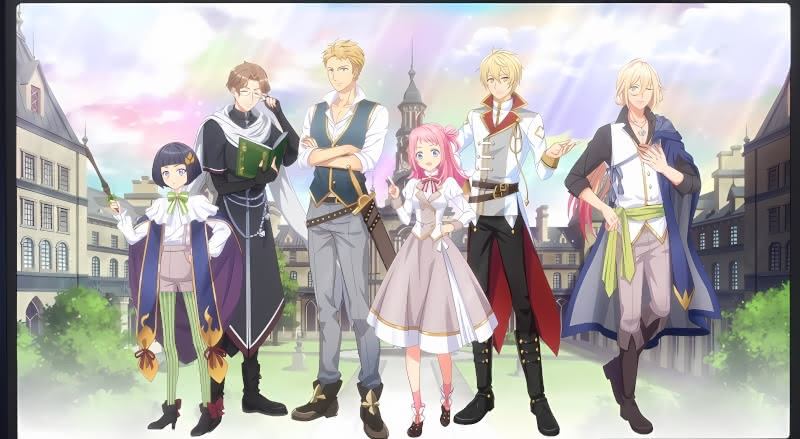
As Endo and Kobayashi begins, Kobayashi has already completed all of the routes and seen everything Love Me Magically has to offer. But her favorite character in Love Me Magically is neither Fiene nor any of Fiene’s gentleman suitors – instead it is Lieselotte Riefenstahl, the fiancee of Siegwald Lieselotte is a stereotypical tsundere (harsh on the outside to cover up her softer side) who has trouble expressing her feelings.
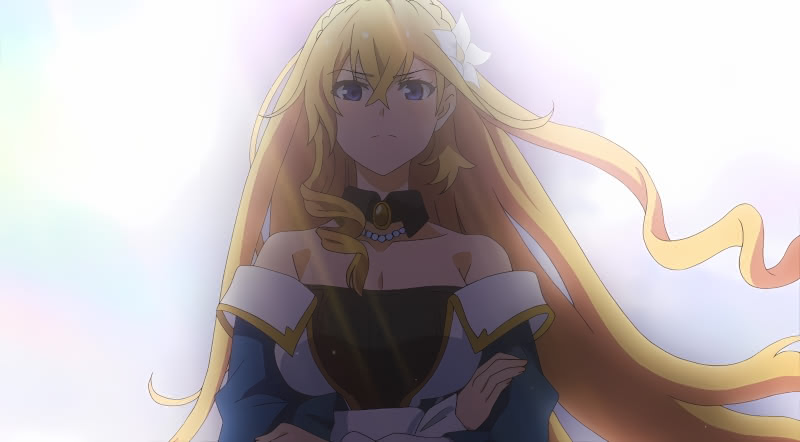
Kobayashi is haunted by the fact that no matter how one plays Love Me Magically, poor Lieselotte always meets a tragic end in the game’s normal endings. Lieselotte’s problem is that she is possessed by an evil witch who uses her insecurity and anxiety to possess her. The other characters are, in turn, forced to kill the irrevocably possessed Lieselotte to protect innocents. (See my discussions of quintissential tsunderes in my reviews of visual novels Red Shift and ACE Academy.)
Kobayashi convinces Endo to play Love Me Magically with her in the first episode of the series. Endo is not initially convinced that he will like Love Me Magically, but he is more than convinced that he wants to spend time with Kobayashi. Kobayashi suggests that they engage in running commentary on the game to practice for their broadcast club activities (that Kobayashi likes Endo’s voice is not well-concealed).
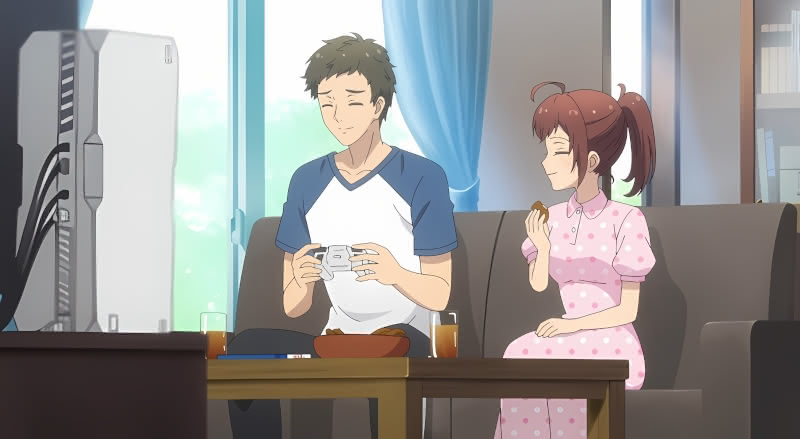
When they begin commentating on the game, they receive a stunning surprise – the principal male romance option, Siegwald, responds to their words in the game. (No one is more surprised than Kobayashi, who likely spent countless hours yelling at her television while playing, but never receiving a response.) Endo and Kobayashi begin communicating with Siegwald, who recognizes the voices that seemingly come from the sky as gods.
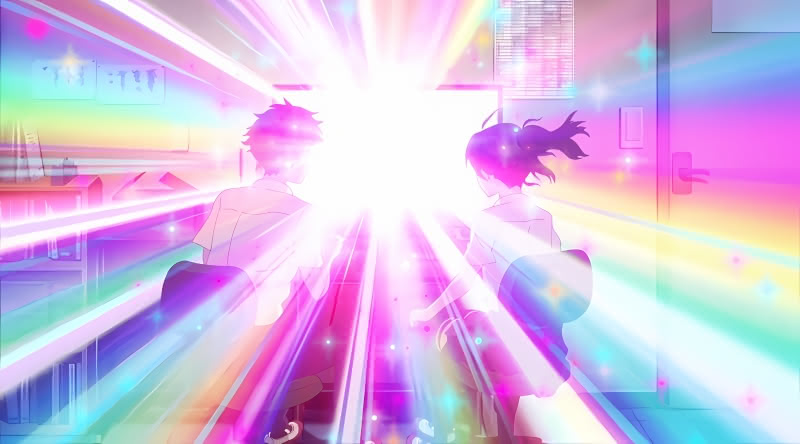
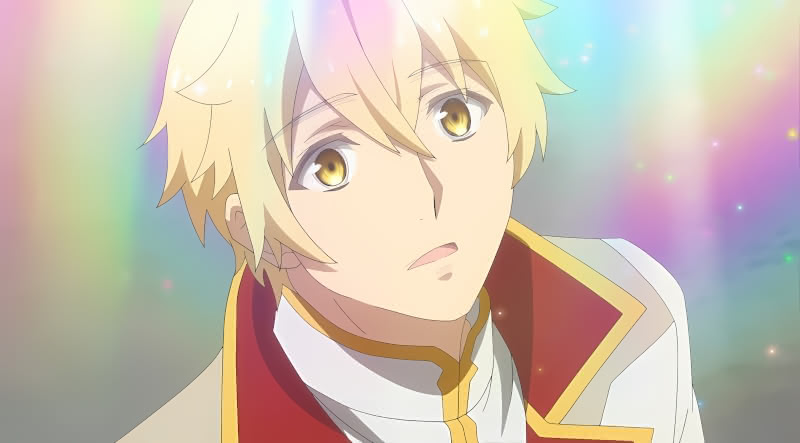
Kobayashi becomes excited when she thinks of the implications of being able to influence events in the game by talking to Siegwald. Her favorite character, Lieselotte, is Siegwald’s fiancee and in love with him. However, Lieselotte acts hostile toward Siegwald (tsunderes…) and Siegwald never fully understands her feelings of love toward him. This, in turn, creates the cycle of events which always leads to Lieselotte’s demise. However, being able to talk to Siegwald means that Kobayashi, with Endo’s help, can guide Siegwald toward understanding Lieselotte’s poorly expressed feelings of love and ultimately changing her fate. Fortunately, Siegwald is very excited to have received the blessing of the gods (he shares the news with the public) and dutifully listens to their advice and begins to understand that Lieselotte does not mean to come off in the ways she often does.

Kobayashi discovers that she can only play the special version of Love Me Magically with Endo. They slowly progress over summer break and after school. In the early part of the story, Endo and Kobayashi can only communicate with Siegwald while still seeing the events of the story from Fiene’s perspective. Eventually, Fiene also gains the ability to hear them, meaning they can talk to both Fiene and Siegwald to help guide them in changing Lieselotte’s tragic fate. For Endo and Kobayashi, this means ensuring Siegwald understands Lieselotte’s feelings and giving him the advice he needs to get through to her and develop their relationship. In a sense, while Fiene is still the game’s viewpoint character, they change the objective from finding her true love to setting Siegwald up with Lieselotte in order to give all of the character’s a chance at a happy ending. At some points their advice to Siegwald is heavy-handed, whereas at other points they only give Siegwald vague clues under the belief that he has to find certain answers within himself to be the person who Lieselotte needs. While all of the in-game characters play a role, the Lieselotte-Endo version of the game gives starring roles to Siegwald, Lieselotte, Fiene, and Baldur, while the other members of the in-game cast play comparatively minor roles.
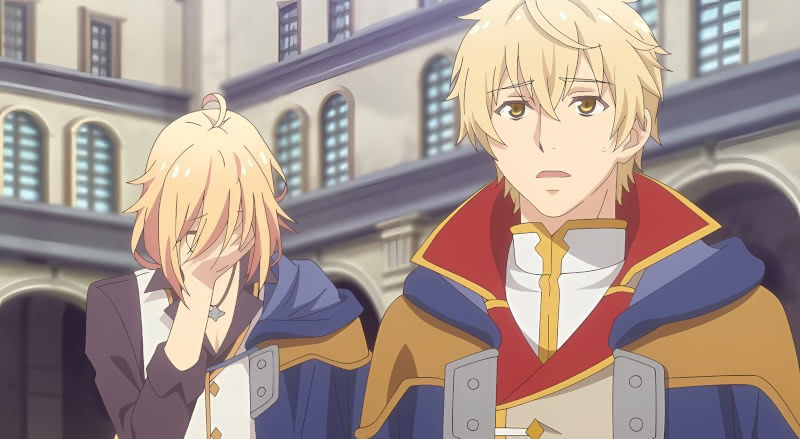
Endo quickly becomes almost as invested in the project as Kobayashi, and they often gush about how adorable Lieselotte is.
The series plays with the idea of parallel relationship development. We see the events of the real, non-game world, through Endo’s perspective. Thus, we know that he is attracted to Kobayashi, and one can reason that Kobayashi also likes Endo, even without having access to her internal monologues. Endo and Kobayashi spend their free time together helping Siegwald and Lieselotte, and in turn they grow closer to one another. However, while the Endo-Kobayashi relationship is developed, it takes a back seat to the events within Love Me Magically for most of the anime.
Praising the concept
The best part of Endo and Kobayashi is its creative take on an overdone concept in anime and manga. We have an excess of new series that transport the main character to a fantasy world (the broader “isekai” genre). Many such series have video game elements as well (in the form of the other world literally being a game or otherwise having video game elements). Not all of these series are bad, but there are too many, and the vast majority do not interest me at all. Typically, to the extent that a series with this general set-up tries to deviate from the norm, it generally does so by couching tired ideas in self-referential humor.
Unlike the true isekai series, Endo and Kobayashi keeps Endo and Kobayashi in the real world instead of transporting them to a fantasy game world. Rather than having them use powers in the magical game world, Endo and Kobayashi use their knowledge of Love Me Magically to create a new story through discourse with two of the game’s main characters.
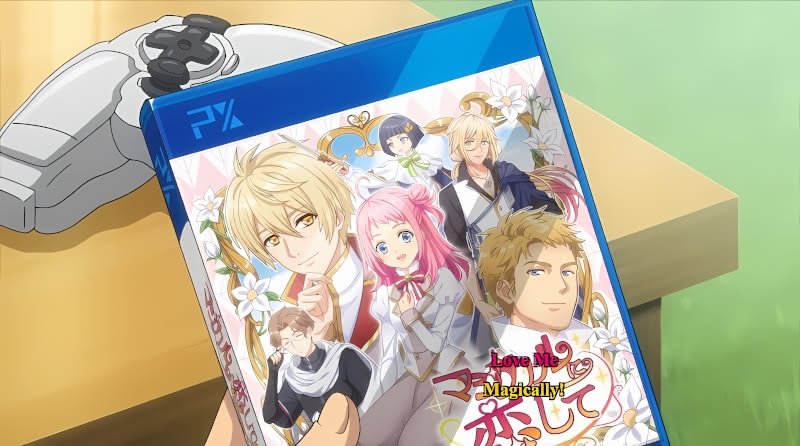
(Having played many games with my New Leaf Journal colleague, Victor V. Gurbo (who always names the protagonist NIXON), I am familiar with the idea that people can have one-sided conversations with 2D people.)
Although playing with the idea of being able to communicate with visual novel characters straight is a fantasy element, the core mechanic of Endo and Kobayashi is supported by real, relatable sentiments. Kobayashi genuinely loves Love Me Magically (perhaps a little bit too much), and she wants to share her passion for the game and its characters with Endo. While she loves the game as it is written, Kobayashi has a great attachment to a character who always meets a tragic fate no matter what choices the player makes as Fiene. At its root, we have the story of a character who loves a story but wishes that her favorite character could have a happy ending. Even those who have never played a visual novel can probably relate to the sentiment with respect to a book, TV show, movie, or the like.
My colleague Victor V. Gurbo and I have exchanged thoughts on choices in video games (see Victor’s query and my response). Choices give the player agency, the ability to put his or her stamp on a game’s story. But choices are still limited. In the case of a multi-path visual novel like Love Me Magically, choices alter the story, but there is only a limited set of possible outcomes. In an open world-type game, the game’s world is finite and controlled by certain rules. Love Me Magically is portrayed as a long and interactive visual novel, but Kobayashi’s desire for a happy Lieselotte had been beyond its scope until Endo joined her in gameplay.
The fantasy element of Endo and Kobayashi is less the world of Love Me Magically and more the desire on the part of people interacting with a story to see an outcome not codified and constrained by the author. Kobayashi’s first thought when she realizes that Siegwald can hear her and Endo is that she can work with him to help save Lieselotte.
It occurred to me while watching the series that it depicts an interesting concept for a game. Creating a game wherein a player influences events through conversation with one of the game’s characters rather than making choices on behalf of the character is an neat idea, and is all-the-more potentially interesting if the player takes the role of someone who exists in our world. (I am sure versions of it have been done before.)
Finally, the series does well to hew closely to its main ideas in handling the interactions between Endo and Kobayashi in the real world and Siegwald and Fiene in the world of Love Me Magically. Kobayashi’s desire to help Siegwald help Lieselotte is informed by her love of the characters. She trusts Endo to help her when she sees that he too becomes invested in guiding the characters to a happy ending. Siegwald initially trusts in the voices of Endo and Kobayashi because he understands them to be gods of his world, so he puts his faith in them even when they advisee him to act in ways toward the facially icy Lieselotte that he thinks are counter-intuitive. Siegwald’s faith grows in Endo and Kobayashi when he understands that their advice is well-founded after seeing the results. Endo and Kobayashi eventually test Siegwald’s faith when they decide, on several occasions, that he needs to find certain answers in his own heart and feelings. The reason that Endo and Kobayashi are comfortable taking a hands-off approach at times is because they see that Siegwald loves Lieselotte and has the answers he needs. Despite being apprehensive about vague guidance, Siegwald trusts in the judgment of Endo and Kobayashi, both as gods of his world and because he has seen that they are guiding him toward the right path. (For those who are interested in a deeper take, see two essays on the subject of Endo’s and Kobayashi’s interactions with Siegwald published at Beneath the Tangles (see essay one and essay two)). These themes filter down to Lieselotte, who is not blessed by the gods like her fiancee. The witch possessing Lieselotte takes advantage of her feelings of inadequacy and lack of faith in Siegwald’s feelings for her. Lieselotte must, both through her own power and the support of those around her, find the conviction to stave off the witch, the strength similar to comes from the trust that other characters in the series have in one another.
A critical review
With the summary and theme discussion behind us, I move to offer a concise, critical review of Endo and Kobayashi.
Endo and Kobayashi’s strengths derive from its interesting take on a broadly tired set-up and the fact that the series is written in a way that shows care for its characters. In light of the fact that the premise of the series centers on Endo wanting to see Kobayashi happy, Kobayashi wanting to see the characters of Love Me Magically happy, and the characters of Love Me Magically coming together to save Lieselotte from her tragic fate, it is important for the series to portray the entire cast sympathetically in order to inspire viewers to care about the outcome – especially since the broad strokes of the final outcome are never much in doubt.
While much of my discussion of the series has focused on Endo, Kobayashi, and Siegwald, the star of the series and its proverbial mascot is undoubtedly Lieselotte – such that she may well have the most screen time despite not being able to interact with Endo and Kobayashi. Lieselotte is a bundle of tsundere cliches (by design), but the series does a solid job of developing her character in its second half to credibly explain how she normally falls victim to the witch. Endo, Kobayashi, and Siegwald spend much time gushing about how adorable Lieselotte is, and the series does do a sound enough job of making her an adorable 2D person.
While the series generally plays its fantasy game setting straight, the intervention of Endo and Kobayashi changes the world in some interesting ways apart from the four characters who receive the most attention (Lieselotte, Siegwald, Fiene, and Baldur). I alluded to the fact in my introduction that two of Fiene’s potential love interests – Fabian and Leon – are younger and older than her respectively. This is not uncommon in otome games (or male-centered dating sims). Both Fabian and Leon are minor characters in the Endo-Kobayashi-influenced version of Love Me Magically, but the endings they receive subtly recognize the fact that they would not have been suitable romantic partners for Fiene – which we can interpret in part as the view of the biggest fan of Love Me Magically, Kobayashi herself.
With the strengths of Endo and Kobayashi come some notable flaws.
Firstly, like many series these days, there is too much yelling to show emotions. Excessive yelling to portray emotions is usually a symptom of deficiencies in writing quality and/or deficiencies in animation quality. Endo and Kobayashi suffers to some extent from both issues. While I praised it for its theme and consistent messaging, Endo and Kobayashi is not an example of deep and subtle scripting. Endo and Kobayashi themselves are not well-developed, and while Siegwald and Lieselotte are stand-outs from the game world, most of the game characters are likable without ever breaking out of their familiar archetypes. The animation quality is inconsistent, ranging from decent on some of its important scenes to inconsistent and poor in others. Dips in quality are especially noticeable in real-world scenes featuring Endo and Kobayashi in the real world away from Love Me Magically.
Secondly, the lack of character development for Endo and Kobayashi wastes much of the potential of the series’ concept. Endo is a nice guy who fell in love with Kobayashi after she extended a hand to him when he was depressed about losing baseball. Kobayashi is a very energetic girl who loves Love Me Magically and wants to spend time with Endo. This is how they start the series, and even with development in their own romantic story-line, which is supposed to run parallel to that of Siegwald and Lieselotte, they grow little as characters. Few episodes devote much time to Endo and Lieselotte away from the game, and the scenes with a real-world focus feel like afterthoughts. Perhaps the biggest disappointment in this area is that for most of the series, Endo and Kobayashi do not learn from their interactions with Love Me Magically. The main way in which the game affects their relationship is to provides them with a credible reason to spend time together outside of school. A better-written story would have more consistently had Endo think about how to apply lessons from his interactions with Siegwald and Siegwald’s interactions toward Lieselotte to his own relationship with Kobayashi.
Thirdly, the pacing of Endo and Kobayashi is inconsistent. Things moves along fairly well in the first half with respect to the game’s story, but it bogs down in the last quarter (with that being said, most of the second half is still the better half). The show saves many important plot elements that are notproperly foreshadowed and introduces them into the decisive final arc, which results in a dump at the end. With respect to Endo and Kobayashi themselves, the series puts off much of their stories until the very end, when it suddenly introduces and resolves issues that were not properly foreshadowed or introduced earlier in the story.
With my critiques noted, however, Endo and Kobayashi is not the type of series that screams potential masterpiece from its premise in the way that its characters tend to shout their emotions. It was, in the final analysis, more pleasant than I thought it would be going in. I appreciated its premise and the fact that it portrayed all of its important characters favorably and in a way to make everyone’s desire to see Lieselotte find her happy ending credible.
Conclusion
I chose to write about Endo and Kobayashi for its interesting premise more than its final merits. But on the merits, it is a nice show – not the type of show that should ever make an appearance in my year-end top-six ranking (see 2021 top five and 2022 top six), but one that deserves honorable mention for being relatively solid and offering something to think about. While it is not a series that I could recommend universally, it is worth watching for people who enjoy the isekai genre generally (granting I am not among them), like games and visual novels, enjoy playing games with others, or who otherwise agree with Endo, Kobayashi, and Siegwald that Lieselotte is, in fact, adorable.
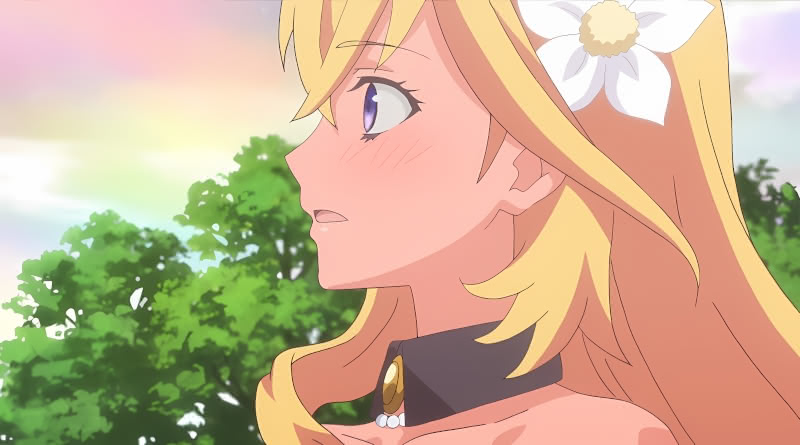
I conclude my review by noting that Endo and Kobayashi does offer some very interesting ideas game design concepts, ideas worth exploring in future pieces.